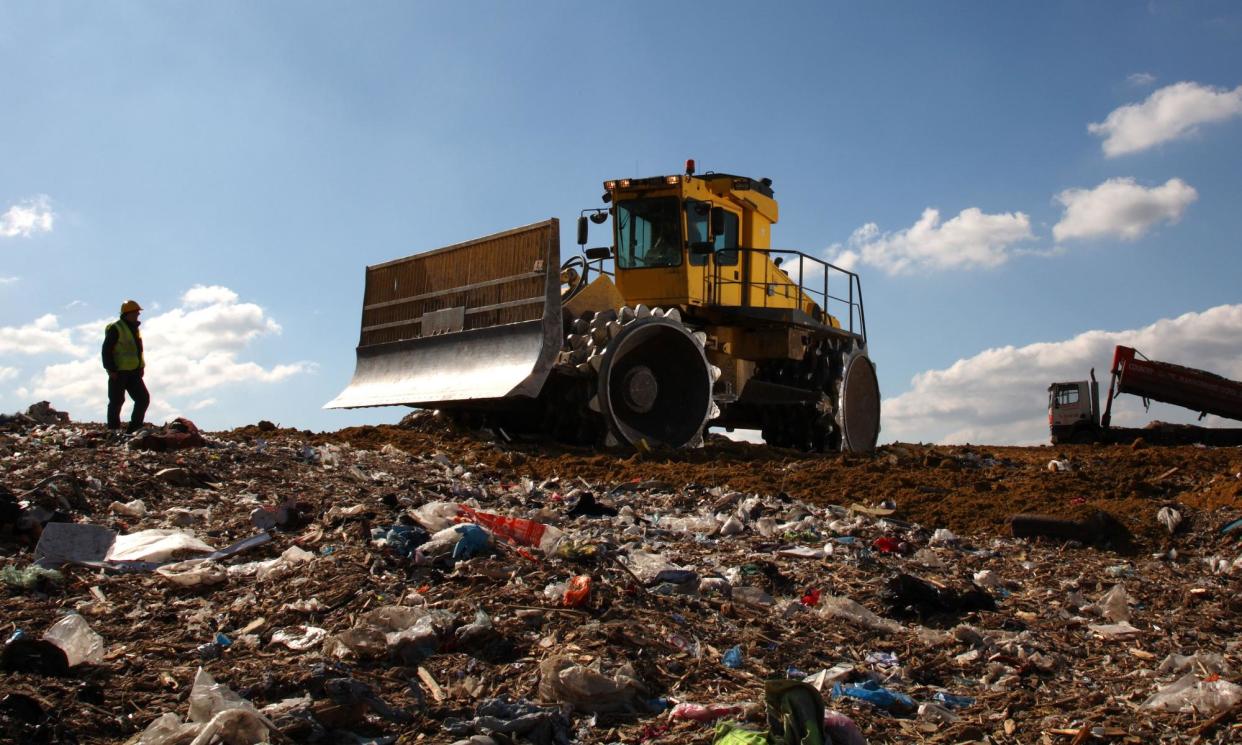Landfills across England could be leaking harmful toxic ooze, warn experts

Thousands of polluted landfills across England could be leaking toxic chemicals into the environment and harming people who live nearby, experts have warned.
A few decades ago, the method for getting rid of industrial and domestic waste was to stick it in a hole in the ground, cover it up and hope for the best. It was known as “dilute and disperse” and it assumed toxic substances would seep into the surrounding soils, air and water and become harmless.
There are more than 21,000 of these “historic” landfills across England, with contents that are largely unknown. A report in the British Medical Journal found that 80% of the British population lives within 2km of a functioning or closed landfill site. The location of historic landfills and current waste sites can be viewed on a new pollution map published by Watershed Investigations, along with thousands of other potentially polluting sites.
The landfills are not distributed evenly; analysis of the government’s scrappy historic landfill database by the Guardian and Watershed Investigations reveals that the most deprived parts of the country contain five times more old landfills as a proportion of their area than more affluent places, and three times more operational waste sites.
The forensic environmental scientist Dr David Megson, a contaminated-land expert, said he was “not surprised that many of these sites tend to be in less affluent areas. They are often left as a public open space, as a developer wouldn’t be able to obtain planning permission to build houses on them due to the high levels of chemical pollution.
“Many back on to council estates and it’s not uncommon for children and teenagers to use these sites. These guys are not sticking to the paths and only using the sites occasionally, they are out there regularly exploring and digging in the dirt, I’ve even seen evidence of people lighting ground-gas monitoring boreholes on fire due to the high levels of methane present.”
Methane is an extremely potent greenhouse gas and exposure to high levels of it can lead to mood changes, slurred speech, vision problems, memory loss, nausea, vomiting, facial flushing and headaches. In severe cases, it could affect breathing and heart rate, and cause balance problems, numbness, unconsciousness and even death.
It is also known that landfills can leach a range of nasty substances into the environment, including banned toxic chemicals.
Environment Agency data obtained by the Guardian and Watershed Investigations reveals that long-lasting toxic carcinogens known as “forever chemicals”, such as perfluoroalkyl and polyfluoroalkyl substances (PFAS), have recently been found in the ooze, known as leachate, from dozens of old and existing landfills, along with polychlorinated biphenyls (PCBs) and brominated diphenyl ether (BDE) flame retardants. In some cases the leachate is captured and treated, but this is not always the case.
“PFAS is pretty much ubiquitous and found in all [the sampled] sites, BDEs also come up quite a bit,” said Megson. “These are of interest as they have been emerging pollutants over the last two decades, compared to more traditional pollutants – such as heavy metals, PCBs and dioxins – that we have known about for much longer.
“Treatment procedures, if present at all at these sites, are not designed to deal with PFAS and BDEs. We’ve only been monitoring these pollutants recently, so there could be many large historic landfill sites that were deemed safe under previous investigations, but these investigations did not test for PFAS or BDEs – so they could actually be deemed contaminated land if we were to test them now.”
The environmental scientist Dr Daniel Drage examined the data and noted that the “fact that we are seeing PFAS in landfills that haven’t received waste in 20 to 30 years, and are seeing the highest levels now, shows what a challenge we are facing in tackling the issue. Dealing with PFAS-contaminated waste over the next five to 10 years is going to be a multi-billion pound industry, and landfill simply isn’t an appropriate method for its disposal. There is plenty of evidence to show that PFAS will not remain in landfill, and much of it would end up re-entering the environment.”
Particularly of concern are the thousands of landfill sites situated in flood zones and on the coast; flood water mobilises chemicals, and waves batter and erode landfills built on shorelines.
Councils are supposed to be responsible for looking after old landfills if an owner cannot be identified. Responsibility shifts to the Environment Agency only when a site is considered to present a risk. But since the government withdrew the contaminated land fund in 2017, cash-strapped local authorities rarely have the resources to seek out or actively manage sites.
A spokesperson for the Environment Agency said: “We provide expert technical and regulatory support to local authorities to help them carry out their responsibilities for regulating contaminated land in England. Where contaminated land needs to be remediated, we work with partners to reduce unacceptable risks to human health and the environment.”
Historic landfills and operating waste sites can be viewed on Watershed’s new pollution map


